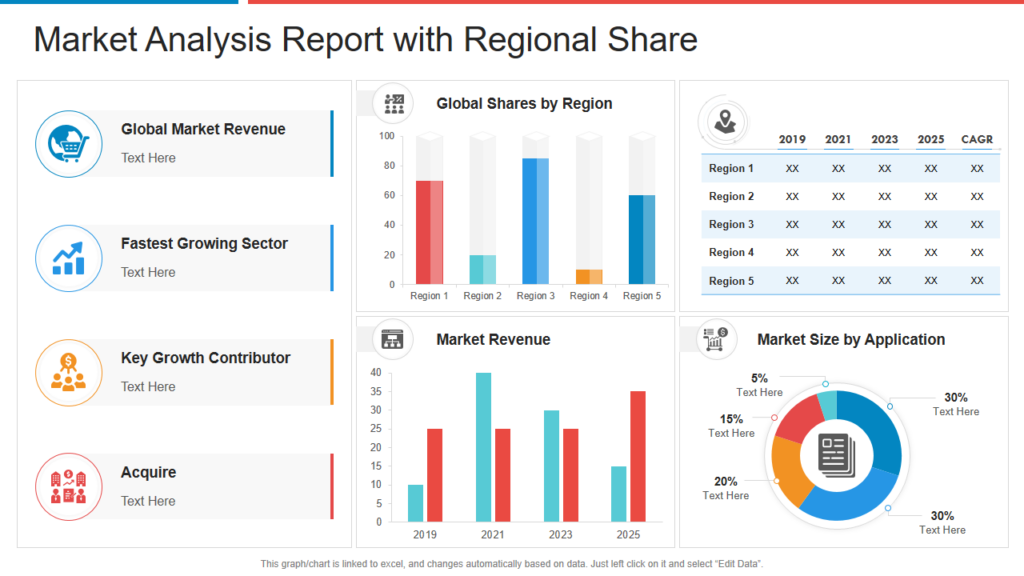Report ID : 1050
- Report Description
- Table of Content
The IoT medical devices market was valued USD 41.5 Billion in 2023 and projected to reach USD 313.63 Billion by 2030, growing at a CAGR of 33.5% during the forecast period of 2023-2030.

Medical devices are designed to gather, transmit, and analyze real-time patient data, facilitating remote monitoring, diagnostics, treatment, and enhanced patient care. IoT medical devices encompass a broad range of products, including wearables, smart implants, remote monitoring systems, connected sensors, and health tracking applications, suitable for diverse healthcare settings such as hospitals, clinics, nursing homes, and patients’ homes. The market’s growth is further driven by government initiatives to promote digital health, the growing need to control healthcare delivery costs, a heightened focus on active patient engagement and patient-centric healthcare, advancements in high-speed networking technologies, the increased integration of mobile platforms in healthcare, and an emphasis on patient safety throughout the forecast period. However, challenges include the high deployment costs associated with connected medical devices and the necessary infrastructure, as well as the limited IoT technology expertise within healthcare organizations, which may somewhat hinder market growth.
Healthcare is adopting faster networks and more mobile platforms.
The adoption of faster networks and mobile platforms in healthcare is primarily driven by the need for efficient data exchange, real-time communication, and remote patient monitoring. High-speed networking technologies enable healthcare providers to securely transmit large medical data, share information instantly for timely decision-making, and offer telemedicine services for remote patient care. Mobile platforms facilitate access to medical records, patient data, and healthcare apps, making it easier for both professionals and patients to manage and deliver healthcare services while on the go, ultimately improving patient outcomes and healthcare system efficiency.
In March 2023, Fujitsu unveiled a cloud-based platform designed to securely gather and utilize health-related data, facilitating digital transformation in the healthcare industry. This innovative platform can automatically convert medical data from healthcare institutions’ electronic medical records, adhering to the advanced HL7 FHIR (1) standard framework. It ensures the secure aggregation of health-related information.
Market Dynamics
Drivers:
- High-speed networking technologies and mobile platforms are on the rise in healthcare.
- Increasing Demand for Remote Patient Monitoring
- Growth Of Chronic Disease Management
Opportunities:
- Growing use of self-operated eHealth platforms driven by a shortage of doctors.
- Increasing Advance Technology
Increasing demand for remote patient monitoring
IoT-enabled medical devices can be used to monitor patients remotely, which can help to improve healthcare outcomes and reduce costs. The increasing demand for remote patient monitoring (RPM) is a key trend in the IoT in medical device market. RPM allows healthcare providers to monitor patients’ health data remotely, using wearable devices, implantable sensors, and other IoT-connected devices. This can help to improve patient outcomes, reduce costs, and make healthcare more accessible.
RPM is particularly beneficial for patients with chronic diseases, such as diabetes and heart disease, as it allows them to manage their conditions more effectively and avoid costly hospitalizations. RPM can also be used to monitor patients who are recovering from surgery or other medical procedures. The growth of the RPM market is being driven by a number of factors, including the rising prevalence of chronic diseases, the increasing demand for value-based care, and the growing adoption of telehealth.
The market for IoT medical devices market is dominated by North America.
North America is the dominant force in the Internet of Things (IoT) healthcare market, and this trend is expected to continue in the forecast period. This leadership is driven by the widespread adoption of healthcare IT solutions, the presence of major industry players, and a well-developed infrastructure. IoT-enabled devices have enabled remote monitoring across the region, ensuring patients’ well-being and providing doctors with more opportunities to deliver high-quality care. Enhanced doctor-patient communication has led to increased patient engagement and satisfaction, resulting in shorter hospital stays and reduced readmission rates. In North America, particularly in the United States, the utilization of Electronic Health Records (EHRs) has reached its full potential. Many companies are taking the lead in the IoT and healthcare sectors, striving to secure a significant market share by developing solutions for specific medical applications, fostering collaborative research and development, and acquiring startups. Healthcare IT firms in the United States, in particular, are reaping the benefits of their innovative and revolutionary services.
Asia-Pacific (APAC) region is expected to witness the highest growth rate. The Asia Pacific region has a high prevalence of chronic diseases, such as diabetes and heart disease. These diseases are often complex and require close monitoring and management. IoT-enabled medical devices can help patients to manage their chronic diseases more effectively and avoid costly hospitalizations. The demand for remote patient monitoring (RPM) is increasing rapidly in the Asia Pacific region. This is due to a number of factors, including the rising prevalence of chronic diseases, the aging population, and the increasing urbanization. IoT-enabled medical devices are essential for RPM, and this is driving the demand for these devices in the Asia Pacific region.
Stationary Medical Device Segment is anticipated to hold the Largest Market Share during the Forecast Period
The stationary medical device segment within the IoT medical device market is experiencing notable growth due to several key factors. These devices, such as fixed monitoring stations and diagnostic equipment, are becoming increasingly integrated with IoT technology, enhancing their functionality and connectivity. The growth is driven by the need for more comprehensive and real-time patient data monitoring, which aids in early diagnosis, treatment, and healthcare management. Additionally, the growing prevalence of chronic diseases and an aging population necessitate continuous patient monitoring, further fueling the demand for stationary IoT medical devices. Moreover, the development of secure data transmission protocols and advancements in remote monitoring capabilities have boosted the adoption of these devices in healthcare institutions, contributing to the expansion of this segment in the IoT medical device market.
Major vendors in the global IoT medical devices market are Medtronic, GE Healthcare, Koninklijke Philips N.V., Abbot ,Boston Scientific Corporation, OMRON Corporation, Baxter International Inc, BIOTRONIK, Johnson & Johnson Private Limited, NIHON KOHDEN CORPORATION, Cisco Systems, International Business Machines Corporation, Microsoft Corporation, SAP SE, Capsule Technologies Inc., Resideo Technologies Inc., Stanley Healthcare among others.
Segmentations Analysis of IoT medical devices market: –
Major Segmentations Are Distributed as follows:
- By Product Type
- Vital Signs Monitoring Devices
- Imaging Systems
- Respiratory Devices
- Implantable Cardiac Devices
- Neurological Devices
- Anesthesia Machines
- Others
- By Type
- Stationary medical devices
- Implantable medical devices
- Wearable medical devices
- By Connectivity technology
- Bluetooth
- Wi-fi
- Zigbee
- By End User
- Hospitals & Clinics
- Nursing Homes
- Assisted Living Facilities
- Long-term Care Centers
- Home Care Settings
- By Region
- North America
- US
- Canada
- Latin America
- Brazil
- Mexico
- Argentina
- Colombia
- Chile
- Peru
- Rest of Latin America
- Europe
- Germany
- France
- Italy
- Spain
- U.K.
- BENELUX
- CIS & Russia
- Nordics
- Austria
- Poland
- Rest of Europe
- Asia Pacific
- China
- Japan
- South Korea
- India
- Thailand
- Indonesia
- Malaysia
- Vietnam
- Australia & New Zealand
- Rest of Asia Pacific
- Middle East & Africa
- Saudi Arabia
- UAE
- South Africa
- Nigeria
- Egypt
- Israel
- Turkey
- Rest of MEA
- North America
Recent Developments
- In March 2023, NVIDIA has unveiled a strategic partnership with Medtronic to expedite the advancement of artificial intelligence in healthcare and introduce innovative AI-driven solutions to patient care. The collaboration involves the integration of NVIDIA’s healthcare and edge AI technologies into Medtronic’s GI Genius intelligent endoscopy module, developed by Cosmo Pharmaceuticals. GI Genius is the initial FDA-approved AI-driven colonoscopy tool aimed at assisting healthcare providers in identifying polyps with the potential to develop into colon cancer.
- In September 2022, Wipro GE Healthcare has introduced the Optima IGS320, an AI-enhanced cath lab designed to enhance imaging precision, thus enabling more intelligent and precise healthcare services. This innovative system incorporates a socially mobile gantry movement, offering surgical flexibility and reducing the burden on medical professionals while enhancing their focus during procedures.
Answers to Following Key Questions:
- What will be the IoT medical devices market’s Trends & growth rate? What analysis has been done of the prices, sales, and volume of the top producers of Artificial Intelligence in the Agriculture Market?
- What are the main forces behind worldwide IoT medical devices market? Which companies dominate IoT medical devices market?
- Which companies dominate IoT medical devices market? Which business possibilities, dangers, and tactics did they embrace in the market?
- What are the global Insight Engines industry’s suppliers’ opportunities and dangers in IoT medical devices market?
- What is the Insight Engines industry’s regional sales, income, and pricing analysis? In the IoT medical devices market, who are the distributors, traders, and resellers?
- What are the main geographic areas for various trades that are anticipated to have astounding expansion over the IoT medical devices market?
- What are the main geographical areas for various industries that are anticipated to observe astounding expansion for IoT medical devices market?
- What are the dominant revenue-generating regions for IoT medical devices market, as well as regional growth trends?
- By the end of the forecast period, what will the market size and growth rate be?
- What are the main IoT medical devices market trends that are influencing the market’s expansion?
- Which key product categories dominate IoT medical devices market? What is IoT medical devices market’s main applications?
- In the coming years, which IoT medical devices market technology will dominate the market?
- Executive Summary
- Executive Summary
- Asia Pacific Lyophilized Injectable Market Outlook, 2024 – 2030
- Report Scope & Key Intelligence Areas
- Report Focus
- Key Intelligence Areas
- Recent Development Snapshot
- Research Methodology
- Research Approach
- Key Secondary Sources
- Primary Data Sources
- Preface
- Market Segmentation
- Global Key Players Covered
- Value Chain Analysis
- Pricing Analysis
- Regulatory Landscapes
- Industry Standards
- Regulatory & Government Bodies
- Associations
- Recent & Upcoming Exhibitions & Events
- Key Stakeholders
- Case Studies
- Market Dynamics
- Introduction
- Market Drivers
- Rising demand for lyophilized injectable Packaging Types
- Increasing Demand for Biopharmaceuticals
- Growing trend towards personalized medicine
- Market Opportunities
- Increasing Awareness and Access to Advanced Medical Technologies
- Market Restraints
- Asia Pacific Lyophilized Injectable Market–By Packaging Type
- Market Overview
- Single-use Vials
- Asia Pacific Lyophilized Injectable Market Revenue (USD Million), By Single-use Vials, 2020-2030
- Asia Pacific Lyophilized Injectable Single-use Vials Market, By Region
- Point-of-care Reconstitution
- Asia Pacific Lyophilized Injectable Market Revenue (USD Million), By Point-of-care Reconstitution, 2020-2030
- Asia Pacific Lyophilized Injectable Point-of-care Reconstitution Market, By Region
- Specialty Packaging
- Asia Pacific Lyophilized Injectable Market Revenue (USD Million), By Specialty Packaging, 2020-2030
- Asia Pacific Lyophilized Injectable Specialty Packaging Market, By Region
- Asia Pacific Lyophilized Injectable Market–By Delivery Type
- Market Overview
- Prefilled Diluent Syringes
- Asia Pacific Lyophilized Injectable Market Revenue (USD Million), By Prefilled Diluent Syringes, 2020-2030
- Asia Pacific Lyophilized Injectable Prefilled Diluent Syringes Market, By Region
- Proprietary Reconstitution Devices
- Asia Pacific Lyophilized Injectable Market Revenue (USD Million), By Proprietary Reconstitution Devices, 2020-2030
- Asia Pacific Lyophilized Injectable Proprietary Reconstitution Devices Market, By Region
- Single-step Devices
- Asia Pacific Lyophilized Injectable Market Revenue (USD Million), By Single-step Devices, 2020-2030
- Asia Pacific Lyophilized Injectable Single-step Devices Market, By Region
- Multi-step Devices
- Asia Pacific Lyophilized Injectable Market Revenue (USD Million), By Multi-step Devices, 2020-2030
- Asia Pacific Lyophilized Injectable Multi-step Devices Market, By Region
- Asia Pacific Lyophilized Injectable Market–By Indication
- Market Overview
- Autoimmune Diseases
- Asia Pacific Lyophilized Injectable Market Revenue (USD Million), By Autoimmune Diseases, 2020-2030
- Asia Pacific Lyophilized Injectable Autoimmune Diseases Market, By Region
- Infectious Diseases
- Asia Pacific Lyophilized Injectable Market Revenue (USD Million), By Infectious Diseases, 2020-2030
- Asia Pacific Lyophilized Injectable Infectious Diseases Market, By Region
- Metabolic Conditions
- Asia Pacific Lyophilized Injectable Market Revenue (USD Million), By Single-step Devices, 2020-2030
- Asia Pacific Lyophilized Injectable Single-step Devices Market, By Region
- Multi-step Devices
- Asia Pacific Lyophilized Injectable Market Revenue (USD Million), By Metabolic Conditions, 2020-2030
- Asia Pacific Lyophilized Injectable Metabolic Conditions Market, By Region
- Asia Pacific Lyophilized Injectable Market–By End-User Analysis
- Market Overview
- Hospitals
- Asia Pacific Lyophilized Injectable Market Revenue (USD Million), By Hospitals, 2020-2030
- Asia Pacific Lyophilized Injectable Hospitals Market, By Region
- Ambulatory Surgical Centers
- Asia Pacific Lyophilized Injectable Market Revenue (USD Million), By Ambulatory Surgical Centers, 2020-2030
- Asia Pacific Lyophilized Injectable Ambulatory Surgical Centers Market, By Region
- Specialty Clinics
- Asia Pacific Lyophilized Injectable Market Revenue (USD Million), By Specialty Clinics, 2020-2030
- Asia Pacific Lyophilized Injectable Specialty Clinics Market, By Region
- Others
- Asia Pacific Lyophilized Injectable Market Revenue (USD Million), By Others, 2020-2030
- Asia Pacific Lyophilized Injectable Others Market, By Region
- Asia Pacific Lyophilized Injectable End-User Market Analysis, By Region
- Asia Pacific Lyophilized Injectable Market – Regional Analysis
- Asia Pacific Lyophilized Injectable Market: Regional Market Overview
- Geographic Scenario And Growth Trends
- Asia Pacific Lyophilized Injectable Market Revenue (%) Share, By Country, 2024 & 2030
- Asia Pacific Lyophilized Injectable Market Comparison, By Country, 2020 – 2024 – 2030
- Asia Pacific Lyophilized Injectable Market Analysis
- Asia Pacific Market Snapshot
- Asia Pacific Lyophilized Injectable Market Revenue (USD Million), By Packaging Type, 2020–2030
- Asia Pacific Lyophilized Injectable Market Revenue (USD Million), By Delivery Type, 2020–2030
- Asia Pacific Lyophilized Injectable Market Revenue (USD Million), By Indication, 2020–2030
- Asia Pacific Lyophilized Injectable Market Revenue (USD Million), By End-User, 2020–2030
- Asia Pacific Lyophilized Injectable Market Analysis, By Country
- China
- China Lyophilized Injectable Market, By Packaging Type
- China Lyophilized Injectable Market, By Delivery Type
- China Lyophilized Injectable Market, By Indication
- China Lyophilized Injectable Market, By End-User
- Japan
- Japan Lyophilized Injectable Market, By Packaging Type
- Japan Lyophilized Injectable Market, By Delivery Type
- Japan Lyophilized Injectable Market, By Indication
- Japan Lyophilized Injectable Market, By End-User
- South Korea
- South Korea Lyophilized Injectable Market, By Packaging Type
- South Korea Lyophilized Injectable Market, By Delivery Type
- South Korea Lyophilized Injectable Market, By Indication
- South Korea Lyophilized Injectable Market, By End-User
- India
- India Lyophilized Injectable Market, By Packaging Type
- India Lyophilized Injectable Market, By Delivery Type
- India Lyophilized Injectable Market, By Indication
- India Lyophilized Injectable Market, By End-User
- Thailand
- Thailand Lyophilized Injectable Market, By Packaging Type
- Thailand Lyophilized Injectable Market, By Delivery Type
- Thailand Lyophilized Injectable Market, By Indication
- Thailand Lyophilized Injectable Market, By End-User
- Indonesia
- Indonesia Lyophilized Injectable Market, By Packaging Type
- Indonesia Lyophilized Injectable Market, By Delivery Type
- Indonesia Lyophilized Injectable Market, By Indication
- Indonesia Lyophilized Injectable Market, By End-User
- Malaysia
- Malaysia Lyophilized Injectable Market, By Packaging Type
- Malaysia Lyophilized Injectable Market, By Delivery Type
- Malaysia Lyophilized Injectable Market, By Indication
- Malaysia Lyophilized Injectable Market, By End-User
- Vietnam
- Vietnam Lyophilized Injectable Market, By Packaging Type
- Vietnam Lyophilized Injectable Market, By Delivery Type
- Vietnam Lyophilized Injectable Market, By Indication
- Vietnam Lyophilized Injectable Market, By End-User
- Australia & New Zealand
- Australia & New Zealand Lyophilized Injectable Market, By Packaging Type
- Australia & New Zealand Lyophilized Injectable Market, By Delivery Type
- Australia & New Zealand Lyophilized Injectable Market, By Indication
- Australia & New Zealand Lyophilized Injectable Market, By End-User
- Rest Of Asia Pacific
- Rest Of Asia Pacific Lyophilized Injectable Market, By Packaging Type
- Rest Of Asia Pacific Lyophilized Injectable Market, By Delivery Type
- Rest Of Asia Pacific Lyophilized Injectable Market, By Indication
- Rest Of Asia Pacific Lyophilized Injectable Market, By End-User
- China
- Competitive Landscape
- Introduction
- Top Company Rankings
- Asia Pacific Lyophilized Injectable Market, Top Companies Dashboard
- Company Market Share Analysis (%), 2023
- Emerging Small & Medium Companies
- Technological Advancement in Lyophilized Injectables Market
- Major Funding & Investments
- Company Profiles
- Aristopharma Ltd.
- Company Overview
- Packaging Type Portfolio
- Financials
- Business Strategy
- Recent Developments
- B. Braun SE
- Company Overview
- Packaging Type Portfolio
- Financials
- Business Strategy
- Recent Developments
- Cirondrugs
- Company Overview
- Packaging Type Portfolio
- Financials
- Business Strategy
- Recent Developments
- Nipro Europe Group Companies
- Company Overview
- Packaging Type Portfolio
- Financials
- Business Strategy
- Recent Developments
- Pace Biotech
- Company Overview
- Packaging Type Portfolio
- Financials
- Business Strategy
- Recent Developments
- Protech Telelinks
- Company Overview
- Packaging Type Portfolio
- Financials
- Business Strategy
- Recent Developments
- Sanofi
- Company Overview
- Packaging Type Portfolio
- Financials
- Business Strategy
- Recent Developments
- SCHOTT Pharma
- Company Overview
- Packaging Type Portfolio
- Financials
- Business Strategy
- Recent Developments
- Unison Chemical Works
- Company Overview
- Packaging Type Portfolio
- Financials
- Business Strategy
- Recent Developments
- weefselpharma.com
- Company Overview
- Packaging Type Portfolio
- Financials
- Business Strategy
- Recent Developments
- Aristopharma Ltd.







